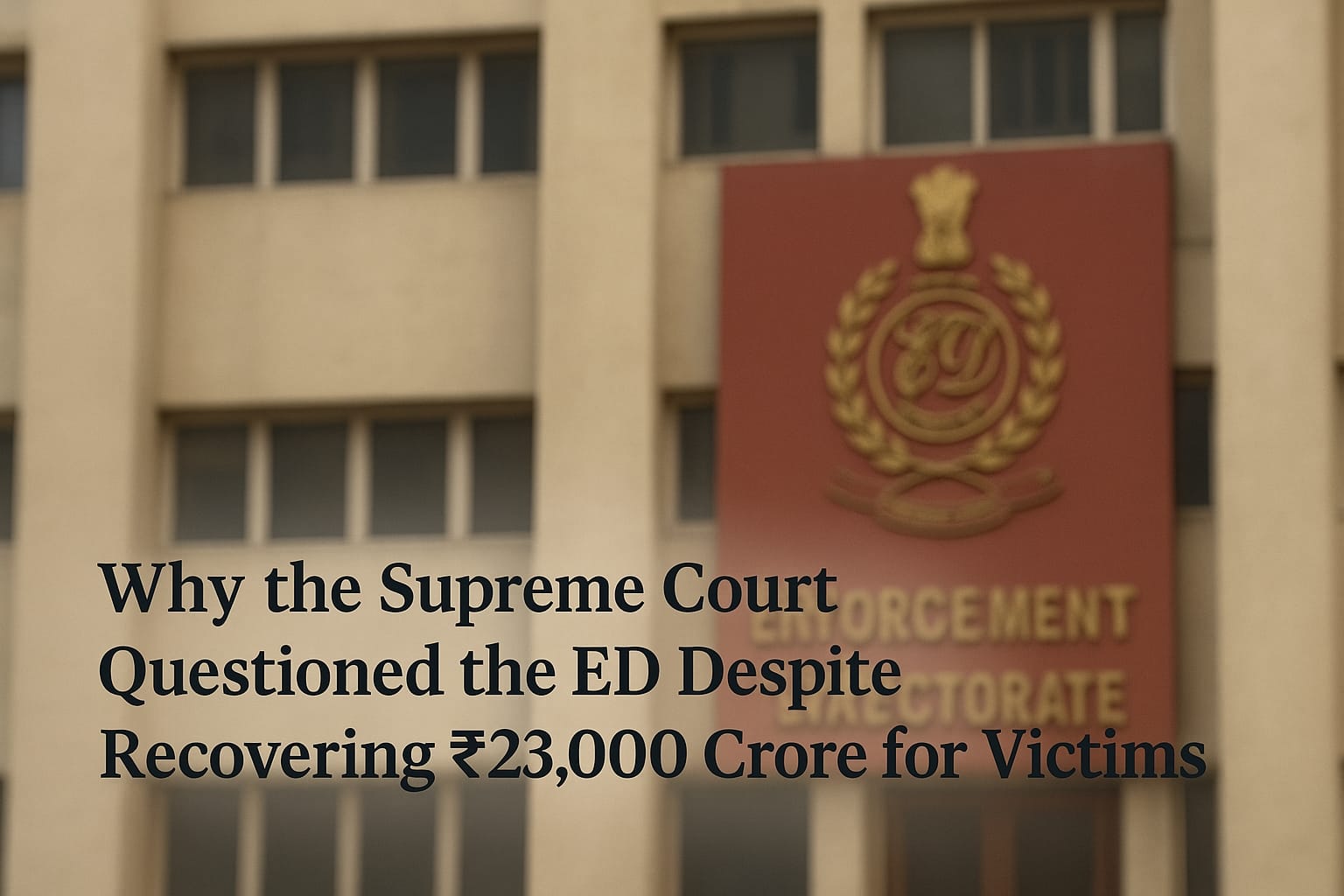Introduction
In Aug 2025, the Hon’ble Supreme Court received an information which seemed like a significant victory in the fight against financial crime. The Solicitor General of India, Tushar Mehta revealed that the Enforcement Directorate (ED) had recovered a staggering ₹23,000 Cr. from money laundering cases and instead of letting the money be in government accounts, had actually returned it to the victims of such crime.
It’s the kind of headline that makes you think: “Well, at least something’s working.” But the Supreme Court wasn’t clapping just yet.
The Court Pushes Back
Chief Justice B.R. Gavai had a simple but piercing question: “What is the conviction rate?”
That single question shifted the tone in the courtroom. Mehta admitted that convictions in money laundering cases are low — and not just for the ED, but across criminal cases in India. Still, the admission made it clear that while the agency might be good at seizing assets, it struggles to secure final, lawful verdicts against the accused.
The conversation didn’t stop there. The bench, visibly concerned about investigative overreach, reminded the ED to work strictly “within the four corners of the law.” In a stinging line that made headlines, one of the judges remarked, “You can’t act like a crook.”
The point here is – even in the fight against big-economic crimes, the ends don’t justify the means.
Why This Matters
This isn’t the first time the Supreme Court has taken the ED to task. Over the past few years, the agency has been accused of acting with too much muscle and not enough evidence — from conducting high-profile raids that later collapse in court, to keeping accused people in jail for years without securing a conviction.
In fact, official data shows that the ED’s conviction rate in PMLA cases is under 10%. That means in the vast majority of cases, the accused are either acquitted or the case drags on without closure.
The Real Balance to Strike
Recovering ₹23,000 crore and giving it back to people who lost their money is undeniably a good thing. It brought some relief to victims who might never recover their money still as the Supreme Court stated – justice goes beyond financial solutions — it demands a procedure that is fair, lawful, and ends with sincere accountability.
Conclusion
The ED’s work in tracing and recovering illegal wealth is significant and pivotal, but the Supreme Court’s message was clear: financial wins don’t excuse weak convictions or procedural shortcuts. For justice to truly be done, the agency needs to match its recovery numbers with courtroom wins — and do it all while respecting the law.
About the Author:
Sarika, an alumnus of Mody University of Science & Technology, Rajasthan is an ardent learner having keen interest in Constitutional and Criminal Law. Through her academic journey and hands-on legal experience, she has developed a strong interest in legal research, policy analysis, and illustration.

